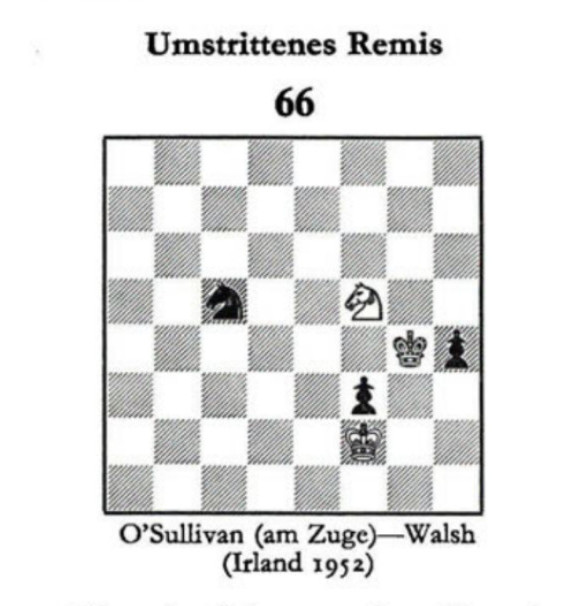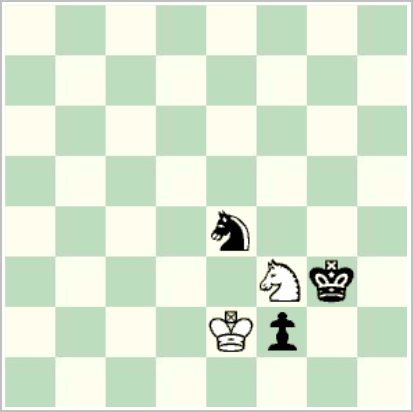Richtig und Falsch: Praktische Endspielkunde, by Kurt Richter and Hans-Hilmar Staudte was originally published by Walter de Gruyter Verlag in 1962 and has been reprinted several times since then, most recently last year.
On page 39 (via a Google Books preview), we have the following diagram:

Yet once more, we have the ending we previously discussed here, in A famous ending—I, A famous ending—II, A famous ending—III, and A famous ending—epilogue (June 4-10, 2016, i.e., five years ago).
As discussed then, the ending has featured in books by Golz and Keres, Van Perlo, Trautmann, and Smith, and the original analysis was given by J. J. Walsh in Chess in Ireland in 1959.
Richter and Staudte provide yet another twist to the story, as they dispute J. J.’s analysis (“Umstrittenes Remis” translates to “controversial draw”). After 63. Nxh4 Ne4+ 64. Ke3 f2 65. Nf3! Kg3, White resigned, but J. J. pointed out that 66. Ke2 Nc3+ 67. Kf1 Kxf3 is stalemate, and gave the final position as drawn.

66… ?
But after 66. Ke2 here, reaching the diagrammed position, Richter and Staudte give 66… Nc5 (‘!’) as winning, with the following variations:
I. 67. Kf1 Nb3;
II. 67. Ne1 Nb3 68. Nf3 (or 68. Nc2) 68… Nd4+ or 68. Nd3 Nc1+;
III. 67. Nd2 (or 67. Nh2) 67… Kg2 68. Nf1 Ne4.
What do you think of this analysis, and what is the correct evaluation of the diagrammed position immediately above?
This endgame is such an excellent exercise that I don’t want to spoil it by providing a solution, but will instead point to the Nalimov tablebases.
